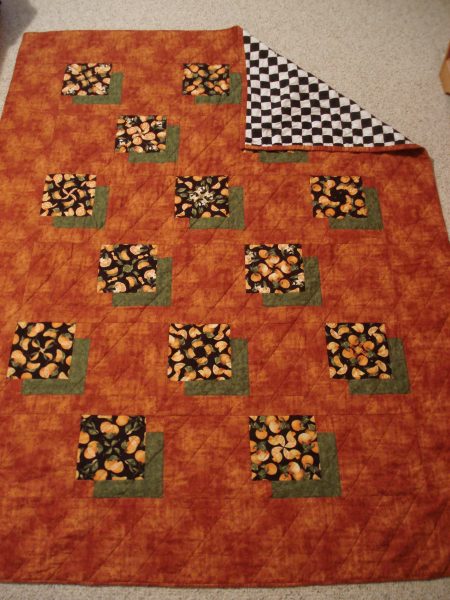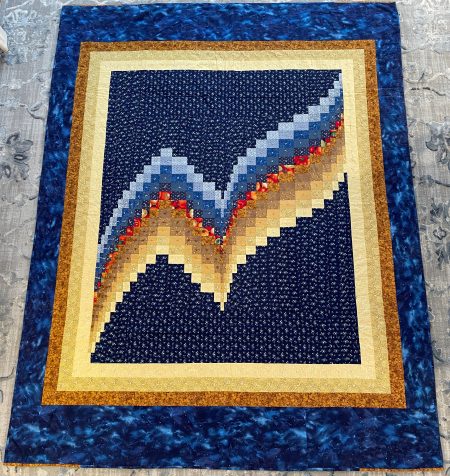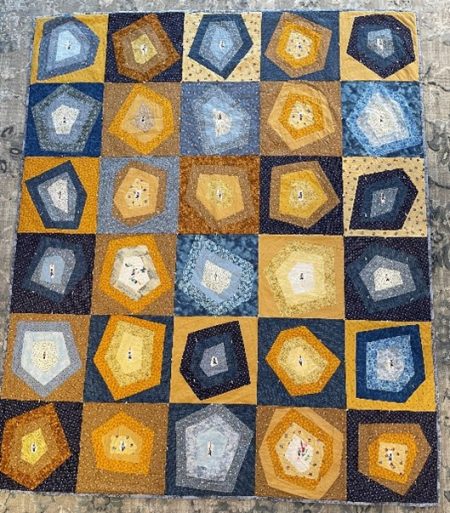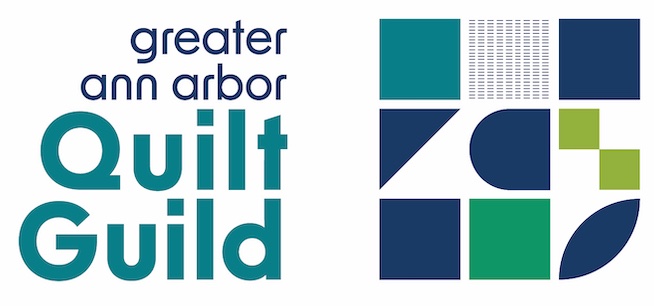By Camie Roper
Are you entering your first quilt in a quilt show or your hundred-and-first? Did you know that you can get double exposure by adding an alluring back? Think about it and get stitching!
Consider the back of your quilt a blank canvas for even more creativity. Use extra blocks from the front, leftovers from other projects, or a preprinted panel – this is yet another opportunity for you to present something out of the blue – unique to you!
A simple back can be made with two 42’-wide, full-length pieces joined with a long strip, or pieced from fabrics left from the front. It can contrast with or complement the quilt’s design and colors.
The sheer size of a quilt back can make it costly. Be open to options other than new fabric. Thrift stores have linen sections where often you can find beautiful 100% cotton sheets or fabric in great shape (sometimes new!). I’ve used men’s shirts in pretty batiks or unusual prints. Large sizes contain nice yardage in the sleeve, front and back. You may need to rip out seams or stitches, but sometimes the fabric is truly one of a kind and worth the effort.
Flannel makes a fine backing, giving the quilt a lovely hand and quilting well on a domestic machine or long-arm.
If worse comes to worst, choose 90”- or 108”-wide backing. A finished quilt is a sigh of relief…
Here are some of my quilts and their stories.

Not long ago, Jean Coleman taught a Shadow Block class at GAAQG Quilt University. (This design has a box casting an off-set shadow – very three-dimensional and appealing.) My background was a copper color; shadows were sage green; boxes were a black-and-orange print cut and sewn in kaleidoscope fashion, each showcasing a different aspect of the print. I couldn’t figure out how to set the boxes on the diagonal, so Jean let me do a straight set.
A black-and-white check went on the back and it made it to SafeHouse Center by Halloween.

These two blue quilts below are my designs. I love bargello and don’t know how many I’ve made.
The back of this is made with the orangey-red print you can scarcely see on the front. (Remember complementary color schemes? This might just barely squeak by as one.)

In the second quilt, each block center is a fussy-cut little soldier, taken from a shirt I sewed my son when he was small. When he outgrew it, I just couldn’t let it go. So I added gold and blue to make a quilt. Each block has a pentagon (soldier) at the center. I pieced around each side log cabin-style until the shape looked about the right size. (Yes, it’s quite a precise technique, with no room for error – NOT.) I added the background and squared up each block. The quilt seems comfortingly primitive, rather like the rocky wheels on Fred Flintstone’s car.
Next time, we’ll amble into the dizzying world of quilting designs.

